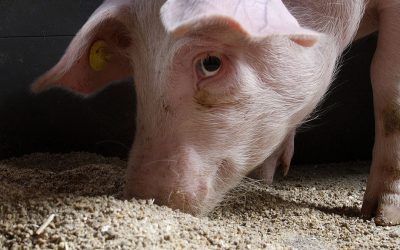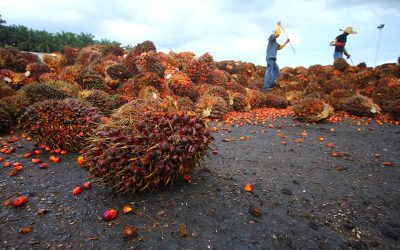Antimicrobial resistance, a Canadian perspective
“The use of antimicrobials in animal husbandry is a complex, multifactorial problem that requires veterinarians to work closely with professionals in public health and animal owners to find solutions from both animal and human health perspectives,” writes Dr. Brian Evans, Chief Veterinary Officer for Canada of the Canadian Food Inspection Agency in the July 2012 issue of the Canadian Veterinary Journal.
Since their introduction some 60 years ago, antimicrobials have revolutionized both veterinary practice and human medicine. When used appropriately, antimicrobials – including antibacterials, antifungals and antivirals – continue to play an important role in animal and human health.
These products reduce suffering and help farmers raise healthy animals, which in turn provide safe meat, milk and eggs for human consumption. They are also critical tools in human medicine.
However, the misuse of antimicrobials in both human and animal health contributes to the development of resistant bacteria, thereby posing a risk to people and animals.
Earlier this year, the World Organisation for Animal Health (OIE) identified the fight against antimicrobial resistance as one of its priorities for 2012. The OIE also advocated for good veterinary control of the registration, import, distribution and on-farm use of antimicrobials.
The OIE’s call for better control of antimicrobials echoes last year’s statement from the World Health Organization (WHO), which warned that the world is on the brink of losing these “miracle cures” due to the emergence and spread of drug-resistant pathogens.
Misuse in human medicine
As the WHO noted, the development of resistance is a natural process that eventually happens with every drug. However, a number of factors in both human medicine and veterinary practice have accelerated this process.
According to the WHO, in human medicine, drugs are sometimes dispensed too readily, “just to be on the safe side” – often in response to patient demand.
In other cases, patients do not complete the full course of treatment. In some countries, substandard products are sold and individual pills are available over-the-counter.
On the animal side, antimicrobials are routinely used in livestock feed for growth promotion and to prevent infections in food-producing animals.
Some drugs can be purchased without a veterinary prescription, or used outside the approved levels with a veterinary prescription.
Medical important drugs
Some of the drugs commonly used in livestock production are medically important for human health. For example, macrolides and tetracyclines are often incorporated into feed for growth promotion or disease prevention, and fluoroquinolones and cephalosporins are frequently used to treat and prevent infections.
Pathogens and commensal organisms resistant to these drugs in animals can be transmitted to humans, and the management of animal health then becomes a human health issue. The reverse can also be true.
Further exacerbating the situation is the fact that new drugs are not being developed quickly enough to replace existing drugs that are failing in the face of emerging drug-resistant pathogens.
Internationally, the OIE and WHO are raising awareness of the issue. In Canada, federal, provincial and territorial government departments continue to work together on surveillance, prevention and education.
Monitoring resistance
Federally, the Public Health Agency of Canada works with Health Canada and the Canadian Food Inspection Agency (CFIA) to conduct surveillance to monitor antimicrobial resistance through the Canadian Integrated Program for Antimicrobial Resistance Surveillance (CIPARS), which shows that antimicrobial resistance is rising in the food animal sector.
The CFIA also monitors drug residues in food and verifies that medicated livestock feeds meet federal standards.
Health Canada encourages the prudent use of antimicrobial drugs by healthcare professionals and patients, as well as by veterinarians, farmers and other food producers.
As part of its efforts to address concerns about antimicrobial resistance, Health Canada has categorized antimicrobials based on their importance in human medicine and is currently addressing the growth-promotion claims of medically important antimicrobials.
It has also developed a policy on the extra-label use of veterinary drugs and recommends against the extra-label use of critically important antimicrobial drugs (e.g., ceftiofur and fluoroquinolones) in mass-medication situations.
However, extra-label drug use and prescribing medication is a practice of veterinary medicine and is regulated by the provinces.
At the provincial and territorial level, both veterinary and medical regulatory bodies need to encourage their members to be vigilant in their oversight and to prescribe antimicrobials judiciously.
By recognizing that there are risks as well as benefits associated with antimicrobials and engaging in an informative and frank dialogue with all concerned, we can ensure that these valuable tools for health professionals are used prudently in order to preserve their efficacy for treating both animals and people. Society expects no less.
Dr. Brian Evans
Chief Veterinary Officer for Canada
Canadian Food Inspection Agency
Chief Veterinary Officer for Canada
Canadian Food Inspection Agency
(This article was published in the July 2012 issue of the Canadian Veterinary Journal)











